Alcohol & HIV: What You Need to Know
February 16, 2012 13 Minute Read
“We are not here to wag fingers at bars or people who drink. We are here to provide information and resources so that everyone has the knowledge to make the best possible decisions about their health.”
—Neil Giuliano
CEO, San Francisco AIDS Foundation
On February 16, 2012, San Francisco AIDS Foundation held a public HIVision forum titled, “Alcohol & HIV: Current Thinking about Drinking.” In his introduction, foundation CEO Neil Giuliano observed that alcohol use in our community is pervasive—so much so, that “the line between drinking and drinking too much often gets blurred. And when we cross that line, many of us don’t have the tools to recognize it and know where to get help.” According to the Centers for Disease Control and Prevention (CDC), Giuliano said, one in six U.S. adults binge drinks, defined as consuming five or more drinks within two hours for men, and four or more drinks within two hours for women. Excessive alcohol use contributes to car crashes, violence, and sexually transmitted infections like HIV and is implicated in nearly 80,000 deaths per year.
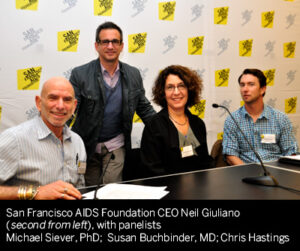 “So,” asked Giuliano, “is drinking bad for us?” Not necessarily, given research showing cardiovascular benefits of moderate drinking. In addition, he said, “we want to recognize the important role that our bars and clubs—and the LGBT merchants and allies who run them—play in creating a very strong sense of community” here in San Francisco. Giuliano’s opening remarks highlighted some of the complex health and social issues surrounding alcohol use and laid the groundwork for a lively panel discussion.
“So,” asked Giuliano, “is drinking bad for us?” Not necessarily, given research showing cardiovascular benefits of moderate drinking. In addition, he said, “we want to recognize the important role that our bars and clubs—and the LGBT merchants and allies who run them—play in creating a very strong sense of community” here in San Francisco. Giuliano’s opening remarks highlighted some of the complex health and social issues surrounding alcohol use and laid the groundwork for a lively panel discussion.
Invited panelists included Susan Buchbinder, MD, director of research for the HIV Prevention Section at the San Francisco Department of Public Health and assistant clinical professor of medicine, epidemiology and biostatistics at the University of California, San Francisco (UCSF); Michael D. Siever, PhD, director of behavioral health services at San Francisco AIDS Foundation; and Chris Hastings, owner of LOOKOUT bar in San Francisco’s Castro neighborhood. The panel was moderated by E. Maxwell Davis, PhD, MSSA, assistant professor of human development and women’s studies at California State University, East Bay.
The purpose of this forum was to begin a frank dialog about the intersection of alcohol use, HIV risk, and HIV health. Following is a summary of key questions and issues that emerged during the panel and audience discussion.
To put alcohol in perspective, how is it similar to and different from other drugs?
“Alcohol affects virtually every part of the body if it’s used in excess. . . . It may be similar to some drugs, but rather than a focused or concentrated negative effect, it has a very widespread effect.”
—Susan Buchbinder
Alcohol is an intoxicant and central nervous system depressant like many other substances of abuse, but it is legal, readily available, and widely socially accepted. Like other drugs, alcohol alters the way we think about, perceive, and react to things, but as Dr. Susan Buchbinder noted, excessive alcohol use has broader effects throughout the body. Buchbinder also explained that alcohol can alter the way medications are metabolized in the body, which may reduce their effectiveness or cause unwanted side effects.
Unlike some more addictive substances, there is “a spectrum of people who are more susceptible or less susceptible to becoming addicted to [alcohol],” Buchbinder observed. “It’s not necessarily a very addictive substance, but for some people, it probably is.” Dr. Michael Siever emphasized that although not everyone who drinks becomes addicted to alcohol, it is a drug. “One of the phrases that a lot of us in the substance-abuse field use pretty frequently is ‘alcohol and other drugs,’ the emphasis on ‘other.’ . . . When you ask people what drugs they do, they generally are not going to talk about alcohol.”
And yet, Siever continued, overuse of alcohol can have consequences as deadly as any other form of substance abuse. “There are regularly stories about . . . ‘hazing’ events where people are encouraged to down a fifth of vodka in one gulp. That can kill you. So it’s a serious drug, but we don’t think of it that way.”
Buchbinder agreed. “I would say that we see many, many more diseases that are related to alcohol use, deaths related to alcohol use, and hospitalizations related to alcohol use than probably all of the other drugs put together”—most likely, she said, because more people drink alcohol than use other drugs and because alcohol affects every organ in the body when overused. “If you’ve already got disease in an organ—the brain, the liver, the heart, the kidneys—alcohol can make that worse.”
“Frankly,” added Siever, “alcohol is much harder on your body than heroin!” Siever acknowledged research indicating the health benefits of moderate drinking, but cautioned that “it’s pretty easy to tip over into the territory where it’s really not a positive effect on your body.”
Given alcohol’s wide social acceptance, how do we define and recognize problematic alcohol use?
“Obviously, it’s about when your drinking is starting to cause problems. That’s easy to say, but the problem is we don’t always recognize when our drinking is causing problems.”
—Michael Siever
According to Siever, drinking is widely considered a cultural “norm”—a view that obscures the real range of ways people use (or don’t use) alcohol. “We tend to think either [your drinking] is fine or you’re an alcoholic, and there’s nothing in between. That’s a major problem in terms of how we think and talk about it.” Rather, there is a continuum of alcohol consumption, from total abstinence and non-problematic use to problematic overconsumption, alcohol dependence, and alcoholism.
Siever mentioned a CDC survey showing that only 50% of American adults drink regularly—although, he noted, the survey “defined a ‘regular drinker’ as someone who drinks 12 or more drinks a year, so that’s a pretty hazy definition.” To moderator Dr. E. Maxwell Davis, this definition further demonstrated how alcohol is viewed differently from other drugs: “If I tell someone that I use crack casually, they probably automatically tell me I have a problem, right? . . . There’s no level of socially acceptable use for a lot of other substances.”
Chris Hastings offered two perspectives on problematic alcohol consumption. “As a member of the community and as a friend, I would say problem drinking is something that’s going to negatively impact someone’s life; it’s going to cause them to make decisions that maybe they wouldn’t otherwise. Maybe that’s on the scale of an evening, or it could be bigger—something that’s going to affect their job or [relationships].” As the owner of a local bar, he has another take: A sign of problem drinking could be “someone just being loud and rude and annoying the patrons around them, or it could be something more serious so that they hurt themselves. There’s a pretty big spectrum of what could be considered a problem.” At his bar, Hastings takes these warning signs seriously: “I think it’s really important for me and my staff to recognize and see those things before they become big problems.”
Siever added that “drinking can cause problems in a lot of different ways, whether it’s physical health or mental health or becoming belligerent or unpleasant. There are also people who quietly drink and it’s not so obvious, but it’s causing problems for them also.” Continuing to do something despite the negative consequences is key to some definitions of addiction, Siever explained. “If you’re having negative consequences yet you continue to do the same thing, that’s a problem.”
Buchbinder identified specific signs of problem drinking, including driving while alcohol-impaired. Drinking among young adolescents is also problematic, she said, as is heavy alcohol use by people over age 65. Among older adults, overconsumption is “going to be a problem particularly, because they are going to be more susceptible to infections [and] to cancers.”
In a clinical setting, Buchbinder said, doctors start asking patients about their alcohol use “when we do blood work and we see a particular pattern of liver dysfunction; we know that that’s from alcohol.” She also described the “CAGE” score, a mnemonic device to remind clinicians to ask patients a series of questions about their alcohol use: Have you ever felt like you need to cut down on your drinking; have you annoyed people with your drinking; do you ever feel guilty about your drinking; and do you ever need an eye opener—that is, do you need a drink in the morning to be able to function? “If people say ‘yes’ to any of those questions, then that’s a trigger to start to ask more questions.”
How does alcohol use affect the health of people living with HIV?
“Probably the biggest issue is that when people are drinking too much, they’re not taking their meds.”
—Susan Buchbinder
 Buchbinder emphasized that people with HIV don’t necessarily need to abstain from alcohol unless they have a comorbid condition, such as hepatitis C or other liver disease, that would be worsened by alcohol use. But, she continued, “HIV and alcohol act synergistically, so that there’s more brain tissue disruption. There’s a new understanding of how HIV causes disease by causing these inflammatory reactions, and alcohol also increases that.”
Buchbinder emphasized that people with HIV don’t necessarily need to abstain from alcohol unless they have a comorbid condition, such as hepatitis C or other liver disease, that would be worsened by alcohol use. But, she continued, “HIV and alcohol act synergistically, so that there’s more brain tissue disruption. There’s a new understanding of how HIV causes disease by causing these inflammatory reactions, and alcohol also increases that.”
In addition to the risk of increased inflammation—and the resulting higher risk for neurological and cardiovascular problems—alcohol use may interfere with HIV-positive people’s ability to adhere to their antiretroviral treatment regimen. “In talking with colleagues, they say that they can get most of their patients down to an undetectable viral load, including sometimes their meth users, their crack users, their injection drug users, but not their alcoholics,” related Buchbinder. “It’s just so destructive to the rhythm of people’s days that it’s really challenging to help people to use meds effectively. If you aren’t using them effectively, you may be developing resistance, and you may be eliminating your future options.”
Alcohol use can also have negative consequences for mental health, Siever noted. Not everyone who turns to alcohol during times of stress or sadness realizes it is, in fact, a depressant. “For those of us living with HIV, depression is one of the things that we struggle with,” he explained. “Drinking, although initially or in the moment seems like it’s helping, probably isn’t helping—and in some ways it probably makes [depression] worse. That’s another way that it interacts with HIV disease.” Siever also noted that, “along with depression, isolation is a real issue for a lot of people—in general, but also for people with HIV. It’s a well-known fact that for people who have problematic drinking or other drug issues, over time, isolation tends to be a result of that.”
Drawing from her own research on HIV and alcohol, moderator Davis mentioned that heavy alcohol use can interfere with important self-care behaviors. “I remember people saying [in interviews], ’It’s not so much what I do if I’m drinking a lot, it’s what I don’t do. I don’t go have coffee with my good friend who is supportive of me, I don’t go to the gym, I don’t do my laundry and such. . . . I don’t do the things that I need to do to live successfully with this disease, because there are times when my drinking is getting problematic.’”
Buchbinder also brought up the challenges of aging with HIV in relation to alcohol. “A lot of the negative impacts of alcohol may accumulate over time, so what might not seem problematic now could be problematic later on,” she observed. As people with HIV live longer, “we might be dealing with the consequences of alcohol at a later time when it’s had an opportunity to cause more disease.” Siever offered his own perspective: “For a lot of us who’ve been living with HIV for a long time, there’s this whole history and accumulation of all the things we did when we thought we were about to die. . . . What impact did that have? What’s our relationship with alcohol and other drugs now? It’s a complicated trajectory over the last 30 years.”
The San Francisco Department of Public Health has identified alcohol as a driver of new HIV infections. In what ways does alcohol contribute to HIV transmission and acquisition risk?
“There’s a lot of data to suggest people are not as safe when they’re under the influence of alcohol. It’s probably partner choice, it’s probably what you’re doing—it may even be how you’re doing it. It’s a combination of all of those things.”
—Susan Buchbinder
Buchbinder explained that the Department of Public Health defines a “driver” of HIV infection as something that is both independently related to HIV acquisition (all other things being equal, that particular factor, in this case alcohol, increases the risk of becoming HIV infected) and is common (that is, at least 10% of the population has that particular risk factor). “Alcohol meets both of those requirements,” she said.
“In terms of becoming HIV infected,” she continued, “it’s probably about what you choose to do sexually” while under the influence. “It’s not clear that [alcohol] is really affecting biologically what’s happening to you; it’s more likely that it’s affecting your judgment, your sexual practices, your choice of partners at the time, those kinds of things.” Added Siever, “in the context of HIV transmission, you don’t have to be an alcoholic or addicted to a drug to have done enough so that you’re not thinking very carefully about what you do.”
Not surprisingly, the disinhibiting effect of alcohol contributes to its role in HIV transmission and acquisition: “We tend to be disinhibited and not think about the consequences of our actions or take responsibility for our actions when we’re a little toasted,” Siever remarked. “And in this culture, it’s also sort of an absolution—like ‘Oh, I was drunk’ is going to absolve you of any responsibility for what you do. I think there are lots of complications about how we think about drinking that make it really problematic in terms of public health.”
Also, Buchbinder noted, if heavy alcohol use prevents people from taking their antiretroviral regimens effectively, there can be potential consequences for both their own health and that of their sex partners. Current research indicates that HIV treatment doubles as HIV prevention by reducing viral load: Less virus in the body means lower likelihood of passing it on through unprotected sex.
Indeed, getting HIV-positive people into medical care and on appropriate treatment is now considered a public health strategy for HIV prevention. “Alcohol probably is the leading risk factor for lack of adherence,” said Buchbinder, “and that will fuel the epidemic—and, more unfortunately, yield an epidemic that has a lot of resistant HIV so that people who are getting newly infected don’t have treatment options either.” To combat this problem, she suggested developing better systems of support for people who are struggling with alcohol and medication adherence. “People should be able to choose whether or not they go on meds,” she stated, “but if they’ve chosen to go on meds, then we want to be sure we have those support structures in place.”
Even after discussing the potential dangers of drinking in the context of HIV health and HIV risk, the panelists agreed that alcohol and bars have an important function in San Francisco. Said Siever, “I’m old enough to remember when gay bars were really the only place you could go to meet other gay people.” Buchbinder added, “that’s the challenge of alcohol, because a little bit of it may be a good thing for some people, right? We don’t want to shut down people’s social interaction.” Hastings agreed, noting that bars have offered “a place where people could come and feel safe when there weren’t other places to go. For a very long time, that was built into what it means to be a part of our community.” And, he continued, “it’s really important for bars to still take on that role. That’s something I try really hard to have LOOKOUT do: really be a part of the fabric of the community that we’re in.”
Can we create effective interventions without addressing the complex relationships between problematic alcohol use and other psychosocial factors like HIV stigma, homophobia, and lack of social support?
“In interviews, folks would tell me, ‘In my family, in my world, on my block, it is so totally unacceptable to be gay, it’s totally unacceptable for me to have HIV—so frankly, I’d rather they think I’ve become an alcoholic.’”
—E. Maxwell Davis
 Like HIV infection, alcohol use and abuse occur in a social context and are driven by a wide range of psychosocial factors, including homophobia and stigma. Siever explained that unease with sexuality and sexual relationships can increase the appeal of using alcohol before engaging with potential partners. “We all think we’re very liberated,” he joked, “but we all struggle with that stuff.” He recalled a conversation with a group of gay men coping with substance-use issues: “I said, ‘How many of you have ever had sex with anyone not under the influence of anything—stone-cold sober?’ And not one of them ever had.”
Like HIV infection, alcohol use and abuse occur in a social context and are driven by a wide range of psychosocial factors, including homophobia and stigma. Siever explained that unease with sexuality and sexual relationships can increase the appeal of using alcohol before engaging with potential partners. “We all think we’re very liberated,” he joked, “but we all struggle with that stuff.” He recalled a conversation with a group of gay men coping with substance-use issues: “I said, ‘How many of you have ever had sex with anyone not under the influence of anything—stone-cold sober?’ And not one of them ever had.”
Buchbinder added, “it’s really clear that the epidemic is driven by a number of upstream issues—stigma, homophobia, poverty, all kinds of things. We definitely do need to address those…but I don’t think those are going to be simple solutions.” Siever suggested harm reduction, a counseling and treatment model that addresses the negative consequences of substance use without requiring a commitment to abstinence from alcohol or other drugs. “Even if you have a problem in terms of your alcohol consumption,” said Siever, “abstinence isn’t necessarily the only answer.”
Stigma around alcohol dependence can prevent people from seeking help, he added: “I think there’s a reluctance to talk very honestly about some of these issues for fear of being labeled as an alcoholic.” Siever highlighted The Stonewall Project, a family of counseling, treatment, and support programs (and part of San Francisco AIDS Foundation) that offers “services people can access regardless of where they’re at with their alcohol use and to what extent they think they do or don’t have a problem with drinking.” He explained, “you don’t have to have already decided or know that you’ve got a problem to be able to come and talk with someone.”
Hastings offered a different take on the psychosocial factors implicated in alcohol use and its interaction with HIV. “I feel like it is possible to address those issues, but I don’t feel like it’s necessary,” he said. Rather, “we should be looking at [having] an impact on decision-making, and the point at which people are making those poor decisions. I feel like that’s a simpler approach to take rather than trying to dissect how complicated and how intertwined alcohol is into our culture, especially in the gay community.” Hastings’ is one of a handful of bars in the Castro and South of Market area participating in the PACE study, short for “Pacing Alcohol Consumption Experiment,” conducted by UCSF and Stop AIDS Project (part of San Francisco AIDS Foundation). Patrons exiting bars opt to take a five-minute survey and use a breathalyzer to gauge their blood alcohol level, and can complete a follow-up online survey about what they did after leaving the bar. The researchers hope to shed light on patterns of alcohol use and related activities, as well as community norms around drinking.
What strengths can we capitalize on in order to address the interaction of problematic alcohol use and HIV/AIDS in our community?
“I think the biggest strength that I’ve seen in the community since I’ve taken over the business is how people band together . . . and how strongly we support each other.”
—Chris Hastings
The discussion ended on a forward-looking note as the panelists turned to the strengths our community can draw on to deal with challenges around alcohol and HIV. Hastings called for greater community awareness of the role of alcohol in San Francisco’s HIV epidemic. “Unfortunately, people don’t at this time see us in being in a crisis mode with this,” he said. In a similar vein, Buchbinder recalled the early AIDS crisis in San Francisco, when people took care of those in need and educated and supported each other in preventing the spread of the disease. “Nothing that we’ve ever done to try to prevent HIV even comes close to what the community did to reduce the rates of infection of HIV,” she said. “I don’t think we could ever hope for a vaccine that would be as effective as the community was.” (She was quick to add, “Hopefully we’ll get a vaccine!”)
Buchbinder also highlighted a need for “expanding that community so that it isn’t just necessarily geographically limited to the Castro.” HIV and alcohol collide in other San Francisco neighborhoods hard-hit by the epidemic; for example, as observed by one audience member, a self-described AIDS survivor, “where I stay, in the Tenderloin, we have four liquor stores to every block.”
To Siever, the word “community” is sometimes overused: “I’ve often complained about how easily we use the word ‘community’ and go around as if it means something, and it doesn’t always.” But, he continued, “part of the meaning of that word to me is that . . . we do take care of each other and look out for each other. I think that does happen a lot, and that is one of our strengths, but it doesn’t always happen.” He emphasized the role of individuals: “If one of our friends is drinking too much, . . . it’s part of being a community and part of being a friend to say something to them.” Concluded Siever, “we’re all in this together.”








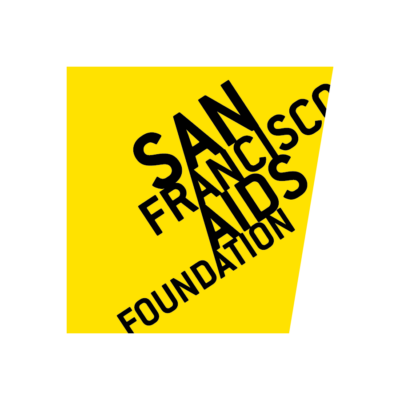

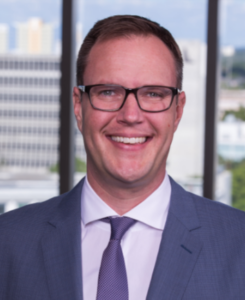

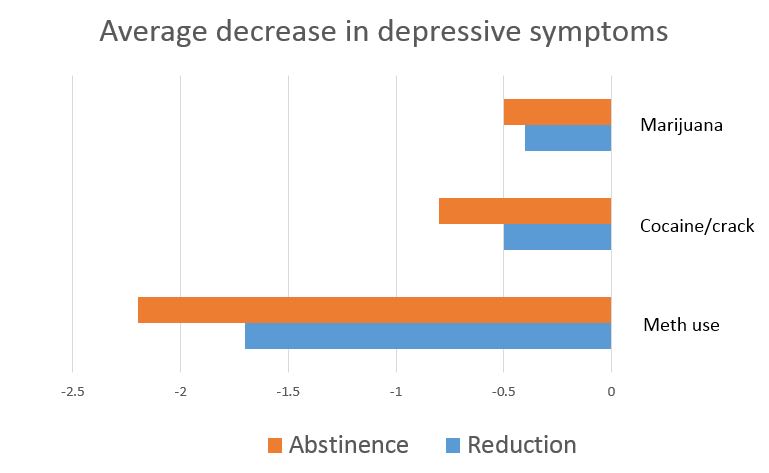
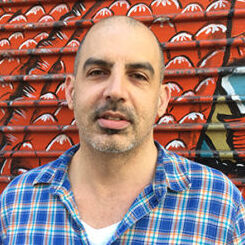
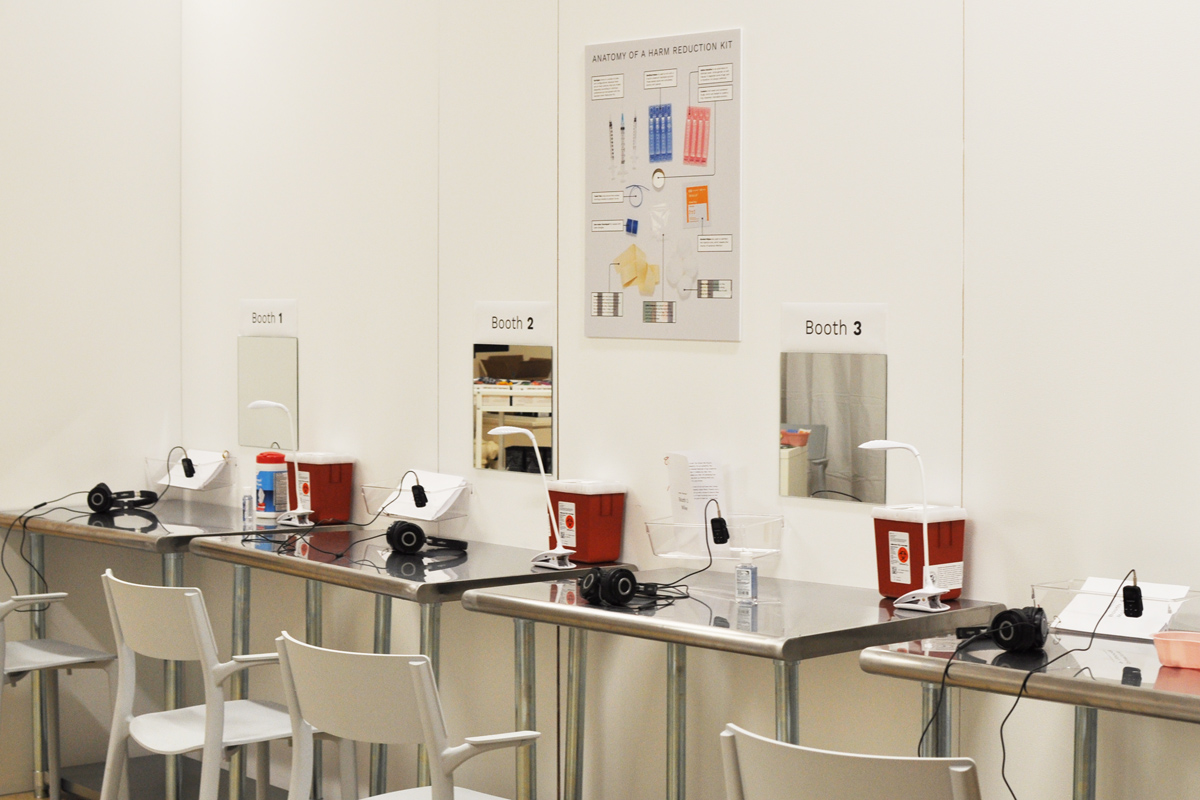

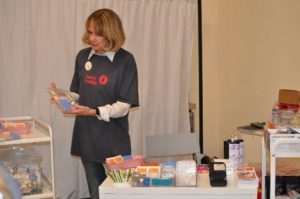

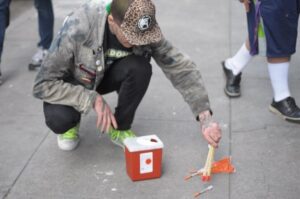
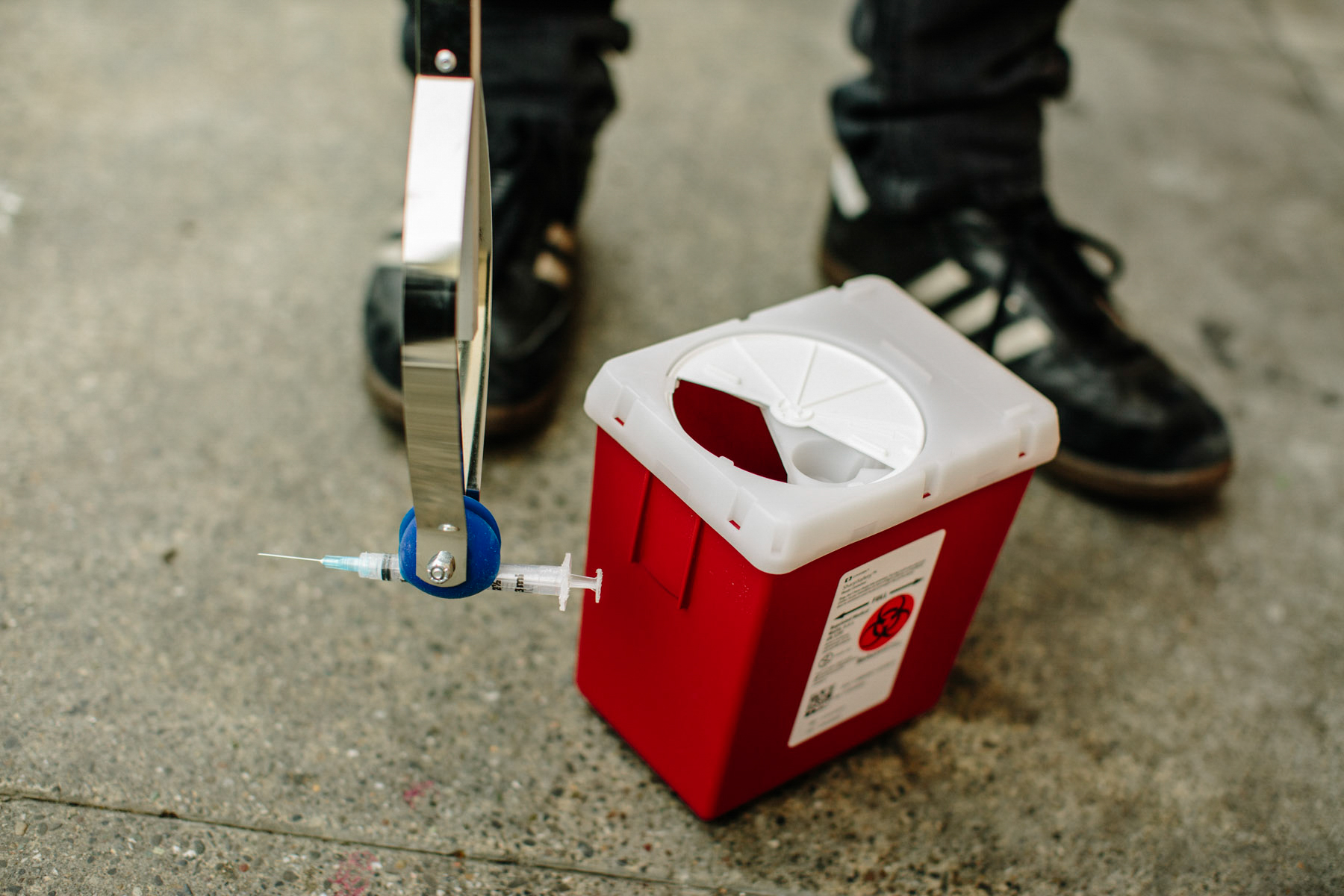

 “So,” asked Giuliano, “is drinking bad for us?” Not necessarily, given research showing cardiovascular benefits of moderate drinking. In addition, he said, “we want to recognize the important role that our bars and clubs—and the LGBT merchants and allies who run them—play in creating a very strong sense of community” here in San Francisco. Giuliano’s opening remarks highlighted some of the complex health and social issues surrounding alcohol use and laid the groundwork for a lively panel discussion.
“So,” asked Giuliano, “is drinking bad for us?” Not necessarily, given research showing cardiovascular benefits of moderate drinking. In addition, he said, “we want to recognize the important role that our bars and clubs—and the LGBT merchants and allies who run them—play in creating a very strong sense of community” here in San Francisco. Giuliano’s opening remarks highlighted some of the complex health and social issues surrounding alcohol use and laid the groundwork for a lively panel discussion. Buchbinder emphasized that people with HIV don’t necessarily need to abstain from alcohol unless they have a comorbid condition, such as hepatitis C or other liver disease, that would be worsened by alcohol use. But, she continued, “HIV and alcohol act synergistically, so that there’s more brain tissue disruption. There’s a new understanding of how HIV causes disease by causing these inflammatory reactions, and alcohol also increases that.”
Buchbinder emphasized that people with HIV don’t necessarily need to abstain from alcohol unless they have a comorbid condition, such as hepatitis C or other liver disease, that would be worsened by alcohol use. But, she continued, “HIV and alcohol act synergistically, so that there’s more brain tissue disruption. There’s a new understanding of how HIV causes disease by causing these inflammatory reactions, and alcohol also increases that.” Like HIV infection, alcohol use and abuse occur in a social context and are driven by a wide range of psychosocial factors, including homophobia and stigma. Siever explained that unease with sexuality and sexual relationships can increase the appeal of using alcohol before engaging with potential partners. “We all think we’re very liberated,” he joked, “but we all struggle with that stuff.” He recalled a conversation with a group of gay men coping with substance-use issues: “I said, ‘How many of you have ever had sex with anyone not under the influence of anything—stone-cold sober?’ And not one of them ever had.”
Like HIV infection, alcohol use and abuse occur in a social context and are driven by a wide range of psychosocial factors, including homophobia and stigma. Siever explained that unease with sexuality and sexual relationships can increase the appeal of using alcohol before engaging with potential partners. “We all think we’re very liberated,” he joked, “but we all struggle with that stuff.” He recalled a conversation with a group of gay men coping with substance-use issues: “I said, ‘How many of you have ever had sex with anyone not under the influence of anything—stone-cold sober?’ And not one of them ever had.”